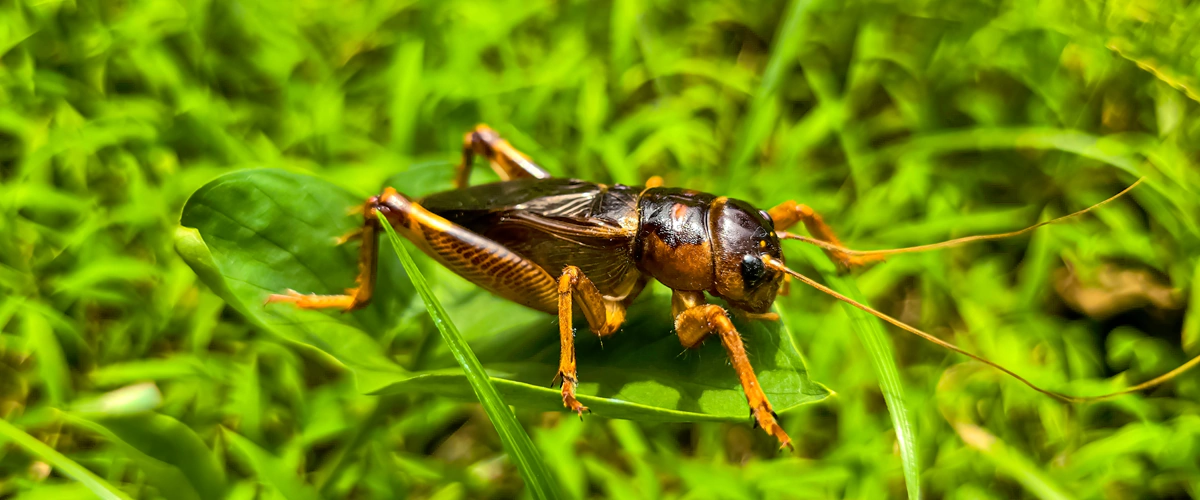Introduction
Crickets are often considered harmless or even beneficial insects, but in garden settings, they can turn into persistent pests. Understanding how crickets affect your plants and garden ecosystem is crucial for maintaining a healthy outdoor space. This article explores the role of crickets as garden pests, their behavior, the types of damage they cause, and expert-backed methods to control their populations effectively.
What Are Crickets and Why Do They Invade Gardens?
Crickets belong to the family Gryllidae and are known for their distinctive chirping sounds. They thrive in warm, moist environments and are nocturnal feeders. Gardens provide an ideal habitat due to ample food sources and shelter.
Common Species Found in Gardens
- Field crickets (Gryllus spp.): Most common in North American gardens, these crickets are black or brown and can damage a variety of plants.
- House crickets (Acheta domesticus): Smaller and lighter in color, they tend to invade homes but can also affect garden plants.
Crickets invade gardens primarily to feed on tender plant parts, including seedlings, leaves, and fruits. Their presence often increases during late summer and early fall when they seek food before overwintering.
How Do Crickets Damage Gardens?
Crickets cause damage in several ways, impacting both plant health and aesthetic value.
- Feeding on Seedlings: Young plants are vulnerable as crickets chew on stems and leaves, which can stunt growth or kill the plant.
- Leaf Damage: They create irregular holes in foliage, reducing photosynthesis efficiency.
- Fruit and Flower Damage: Crickets may feed on soft fruits and flowers, leading to premature spoilage.
- Indirect Damage: By creating burrows or hiding spots in soil mulch, crickets can disturb root zones.
A study published in the Journal of Economic Entomology highlights that cricket damage in vegetable gardens can reduce yields by up to 15% if left uncontrolled.
Identifying Cricket Infestations in Your Garden
Early detection is key to managing cricket populations effectively.
Signs to Look For
- Nocturnal Chirping: Listening for characteristic chirps at dusk and night.
- Chewed Plant Material: Look for ragged holes in leaves and damaged stems.
- Presence of Droppings: Small black pellets resembling mouse droppings near plants.
- Burrows or Soil Disturbance: Loose soil or small holes near plant bases.
Regularly inspecting your garden during evening hours can help spot crickets before damage escalates.
Effective Strategies to Control Crickets in Gardens
Controlling crickets requires an integrated approach combining cultural, mechanical, and biological methods.
Cultural Controls
- Remove Debris and Mulch: Clear away excess leaf litter and thick mulch where crickets hide.
- Water Management: Avoid overwatering; crickets prefer moist environments.
- Plant Selection: Some plants like marigolds and chrysanthemums naturally repel crickets.
Mechanical Controls
- Handpicking: At night, manually remove visible crickets.
- Traps: Use pitfall traps or sticky boards placed around vulnerable plants.
Biological Controls
- Natural Predators: Encourage birds, spiders, and ground beetles that feed on crickets.
- Nematodes: Beneficial nematodes (Steinernema carpocapsae) can be applied to soil to target cricket larvae.
Chemical Controls
- Use insecticides as a last resort, opting for products labeled safe for gardens. Always follow label instructions to minimize environmental impact.
Expert Tips for Long-Term Cricket Management
- Maintain garden hygiene to reduce cricket habitats.
- Rotate crops and avoid planting highly susceptible species consecutively.
- Monitor cricket activity regularly, especially during late summer.
- Combine multiple control methods for sustainable results.
Gardening expert Dr. Linda Chalker-Scott emphasizes, “Integrated pest management tailored to your garden’s unique ecosystem is the most effective way to keep crickets and other pests in balance.”
Conclusion
Crickets can be troublesome garden pests, causing significant damage to seedlings, leaves, and fruits. By understanding their behavior and signs of infestation, gardeners can implement targeted control strategies. Combining cultural practices, mechanical removal, and natural biological controls offers the best chance of minimizing cricket damage while preserving garden health. Regular monitoring and proactive management ensure your garden thrives despite these common pests. Embrace integrated solutions today to protect your plants and enjoy a vibrant, cricket-managed garden environment.
